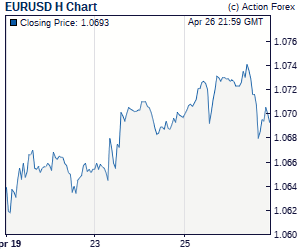EURUSD's Rally As Anti-dollar Trade Appears Overextended The euro has outperformed major currencies since last week. Although news from peripheral European economies reignited concerns about sovereign risks in these countries and widened yield spreads, successful bond auctions alleviated the worries. Moreover, intervention on Japanese yen and heated speculations about Fed's expansion of QE measures have helped drive capitals to the single currency. Currently trading around the highest level in 5 months, EURUSD has surpassed 1.3220 (200-day MA) and 1.3330 (August high). The technical backdrop is bullish and will likely trigger further buying. While the single currency may rise further as weakness in US economic data may trigger the Fed to announce more easing policies later this year while the ECB will likely hold monetary stance unchanged, the euro's current rally has somehow overextended and caution is advised on long positions. Read more... Fed Paves The Way For Further Easing At the September FOMC meeting, the Fed did not announce any new asset-buying program. Yet, the tone of the accompanying statement signaled that policymakers were turning to that direction. At the policy guidance paragraph, the Fed said that it will continue to 'monitor the economic outlook and financial developments and is prepared to provide additional accommodation if needed to support the economic recovery and to return inflation, over time, to levels consistent with its mandate'. Moreover, although the FOMC staff will not publish a new set of economic projections until November, the wordings in the statement indicate that both of growth and inflation forecasts are lowered. Read more... Japan's Unilateral Yen Intervention Is Not Going To Sustain Shortly after the re-election, Japan's Prime Minister Kan surprisingly conducted an intervention in the FX market by buying USD and selling JPY. The timing and the size of the intervention signaled the government's determination and commitment to curb yen's appreciation. The initial impact was encouraging as USDJPY rose more than 3% to 85.78 on September 15 from the low of 82.87 before the intervention and has stayed above 85 thereafter. The question now is whether the intervention is sustainable and if the unilateral intervention can defend the 82 level as implicitly stated by the government. Read more... |









No comments:
Post a Comment